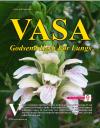Osteoarthritis in Ayurvedic texts is described as Sandhigata Vata. It is one of the most common forms of joint disorders. It damages the joint through wear and tear. It can be painful and depressing. There is no cure in modern medicine, but there are ways of managing the condition and making the life easier. Physiotherapy is an important part of that management.
Causes of Sandhigata Vata (OA): Sandhigata Vata is vatik disorder, so that aggravating factor of Vata can be considered as aetiological factors of Sandhivata. As mentioned earlier Vata particularly vyana vayu has a close relationship with sandhi. So its aggravating factors are also to be considered.
Symptoms and signs: Recurring pain or tenderness in a joint. Stiffness, particularly early morning stiffness, swelling in a joint, Heberden's node and Bouchard's node, obvious redness or heat in a joint, inability to move a joint.
Ayurvedic types of Sandhigata Vata (OA): The Sandhigata Vata is Vata nanatmaj Vyadhi so that bheda of Sandhi Vata are not described in Ayurvedic texts. Sandhivata can be classified in following ways :
1. On the basis of Samprapti
(a) Vata Vardhak Ahar-Viharjanya Sandhivata
(b) Avaranajanya SadhiVata.
(c) Dhatukshayajanya Sandhivata.
2. On the basis of Doshas
(a) Nija - Due to vitiation of Vata by Vata vardhak ahar-vihar, dhatukshya and Avarana etc.
(b) Agantuja - Due to traumatic injury
Types According To Modern View.
There are two types of osteoarthritis:
1. Primary osteoarthritis
2. Secondary osteoarthritis
Primary osteoarthritis is a chronic degenerative disorder related to but not caused by aging. Secondary osteoarthritis is caused by other factors or diseases.
Diagnosis: Diagnosis is normally done through x-rays. This is possible because loss of cartilage, subchondral ("below cartilage") sclerosis, subchondral cysts, narrowing of the joint space between the articulating bones, and bone spur formation (osteophytes) show up clearly on x-rays. Plain films, however often do not correlate well with the findings of physical examination of the affected joints.
With or without other techniques, such as MRI (magnetic resonance imaging), arthrocentesis and arthroscopy, diagnosis can be made by a careful study of the duration, location, the character of the joint symptoms, crepitus on local examination and the appearance of the joints themselves. As yet, there are no methods available to detect OA in its early and potentially treatable stages.
How Physiotherapy Can Help
Physiotherapy can:
1. Reduce pain.
2. Improve movement and posture.
3. Strengthen muscles.
4. Improve independent function.
5. Assess and treat biomechanical problems that may exacerbate the pain and loss of function.
How you can help yourself:
1. Avoid over-stressing joints.
2. Avoid jerky/sudden movements.
3. Don't overload joints.
4. Take care with lifting.
5. Watch your weight.
6. Improve your body alignment to take stress off arthritic joints.
7. Use splints or walking aids as advised.
8. Don't overdo activity or exercises.
Exercises - how do they help? : Exercises for people with osteoarthritis should be individually prescribed. Your physiotherapist can devise a programme of exercises to suit your condition. As a general rule remember if any exercise hurts then don't do it. Recent physiotherapy research has consistently shown exercise to be effective in management of osteoarthritis of the knee.
Exercises help by:
1. Maintaining or increasing movement.
2. Improving joint lubrication and nutrition.
3. Restoring muscle balance.
4. Improving circulation.
5. Improving strength and stability.
6. Improving poor posture.
Don't forget to maintain your general fitness level - this helps you feel better and retain your healthy joints. Gentle regular exercises such as swimming, exercising in water (hydrotherapy), walking or cycling are recommended.
Rest : Whilst rest is an important part of managing your osteoarthritis, it is usually balanced with exercises and activity. In particular rest is required when joints are hot swollen or painful.
Summary and conclusion: Sandhigatavata (Osteoarthritis) is a type of arthritis that is caused by breakdown of cartilage, with eventual loss of the cartilage of the joints. Osteoarthritis can be caused by aging, heredity and injury from trauma or disease. The most common symptom of osteoarthritis is pain in the affected joint(s) after repetitive use. The goal of treatment in osteoarthritis is to reduce joint pain and inflammation while improving and maintaining joint function. Physiotherapy helps to achieve the goal of treatment of osteoarthritis.






 October 2020
October 2020
 Jan 2020
Jan 2020
 June 2019
June 2019
 January-February 2019
January-February 2019
 Augest-September
Augest-September
 April 2018
April 2018
 November 2017
November 2017
 June 2017
June 2017
 November 2016
November 2016
 September 2015
September 2015
 March 2015
March 2015
 July 2014
July 2014
 January 2014
January 2014
 July2013
July2013
 March 2013
March 2013
 May 2012
May 2012
 May 2011
May 2011
 Sep 2010
Sep 2010
 Jun 2010
Jun 2010
 Feb 2010
Feb 2010
 December 2009
December 2009
 August 2009
August 2009
 June 2009
June 2009
 Feb 2009
Feb 2009
 December 2008
December 2008
 October 2008
October 2008
 March 2008
March 2008
 July 2008
July 2008
 May 2008
May 2008